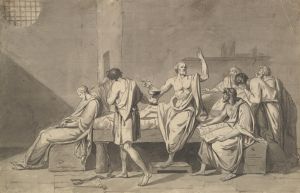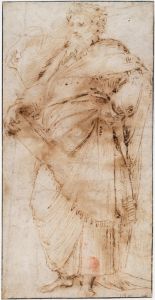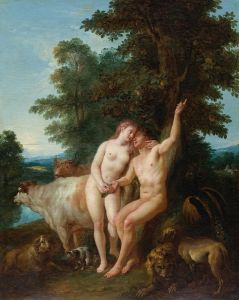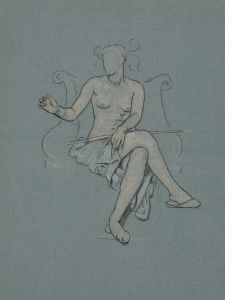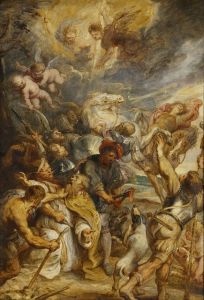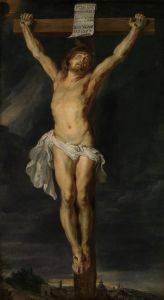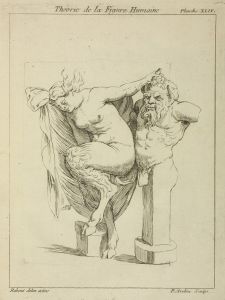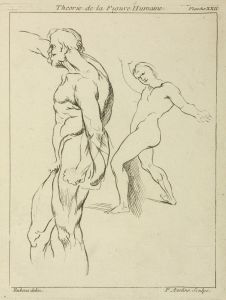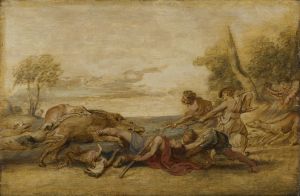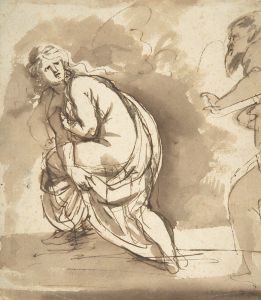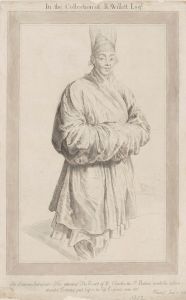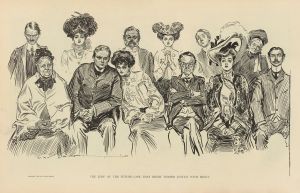
Portrait of the philosopher Seneca
A hand-painted replica of Peter Paul Rubens’s masterpiece Portrait of the philosopher Seneca, meticulously crafted by professional artists to capture the true essence of the original. Each piece is created with museum-quality canvas and rare mineral pigments, carefully painted by experienced artists with delicate brushstrokes and rich, layered colors to perfectly recreate the texture of the original artwork. Unlike machine-printed reproductions, this hand-painted version brings the painting to life, infused with the artist’s emotions and skill in every stroke. Whether for personal collection or home decoration, it instantly elevates the artistic atmosphere of any space.
Peter Paul Rubens, a prominent Flemish Baroque painter, is renowned for his dynamic compositions, vibrant color palette, and dramatic use of light and shadow. Among his vast oeuvre, Rubens created a painting titled "Portrait of the Philosopher Seneca." This artwork reflects Rubens' interest in classical antiquity and his ability to convey complex human emotions and intellectual depth through portraiture.
The painting depicts Seneca the Younger, a Roman Stoic philosopher, statesman, and dramatist who lived during the early Roman Empire. Seneca is often remembered for his philosophical writings and his role as an advisor to Emperor Nero. Rubens' portrayal of Seneca captures the philosopher's contemplative nature and intellectual gravitas, characteristics that align with Seneca's philosophical teachings on ethics, virtue, and the human condition.
Rubens' depiction of Seneca is notable for its attention to detail and the expressive quality of the subject's face. The philosopher is often shown with a furrowed brow and a thoughtful expression, suggesting deep contemplation or introspection. This aligns with the Stoic philosophy that emphasizes rational thought and emotional resilience. The painting may also include symbolic elements that reference Seneca's life and works, although specific details about these elements are not always documented.
The artwork is executed with Rubens' characteristic mastery of oil paint, utilizing rich textures and a nuanced color palette to bring the figure to life. The use of chiaroscuro, a technique involving the contrast of light and dark, enhances the three-dimensionality of the figure and adds to the dramatic effect of the composition. This technique was a hallmark of Baroque art, aiming to evoke an emotional response from the viewer.
While the exact date of the painting's creation is not always specified, it is generally placed within the period of Rubens' mature career, when he was at the height of his artistic powers. During this time, Rubens was highly sought after by patrons across Europe, and his works often reflected the intellectual and cultural currents of the time, including the renewed interest in classical antiquity and humanist thought.
Rubens' "Portrait of the Philosopher Seneca" is an example of how the artist engaged with historical and philosophical themes, using his skills to explore the character and legacy of one of antiquity's most significant thinkers. The painting not only serves as a visual representation of Seneca but also as a testament to Rubens' ability to capture the essence of his subjects, blending historical accuracy with artistic interpretation.
Today, Rubens' works, including his portraits, are celebrated for their contribution to the Baroque movement and their enduring influence on the history of art. The "Portrait of the Philosopher Seneca" remains a significant piece within Rubens' body of work, reflecting both his technical prowess and his engagement with the intellectual currents of his time.





